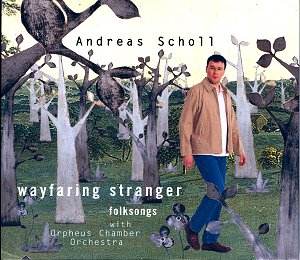 Composer: Johann Sebastian Bach
Composer: Johann Sebastian Bach
Works: Toccata, Adagio and Fugue in C-Major BWV 564; Partita on ‘Sei gegrüsset, Jesu gütig’ BWV 768; Prelude and Fugue in A-Minor BWV 543; Prelude and Fugue in A-Major BWV 536; Chorale Prelude ‘Schmücke dich, o liebe Seele’ BWV 654; Chorale Prelude ‘Wenn wir in höchsten Nöten’ BWV 668a; Passacaglia in C-Minor BWV 582
Performers: Jonathan Biggers, Organist
Recording: May 1994, Arizona State University, Temple, Arizona. Organ by Paul Fritts and Co., 1992
Label: Calcante Recordings CAL CD009
Johann Sebastian Bach’s organ works represent a pinnacle of Baroque composition, showcasing his mastery of counterpoint and innovative use of the organ’s diverse timbral palette. This recording, featuring Jonathan Biggers on the Fritts organ, aims to illuminate the various forms and colors inherent in Bach’s music. The selection includes some of Bach’s most revered pieces, each a testament to his ability to weave intricate musical narratives through the organ’s registers. However, the execution here raises questions about interpretative depth and technical precision.
The Toccata, Adagio and Fugue in C-Major (BWV 564) opens the disc with a clear Italian influence, a blend of virtuosic display and profound emotional depth. Yet, Biggers’s interpretation falters, particularly in the pedal execution, which often lacks clarity and articulation. The muddy lower register obscures the intricate counterpoint that Bach meticulously crafted. The Toccata’s buoyant energy is stifled by an ineffective registration that fails to delineate the layers of sound, resulting in a blurred tapestry rather than a vibrant dialogue.
Moving to the Partita on ‘Sei gegrüsset, Jesu gütig’ (BWV 768), one encounters Bach’s longest set of variations, a work that demands both technical prowess and interpretative insight. Unfortunately, Biggers’s choices here feel uninspired, with insufficient differentiation between the variations. The use of manual reeds to enhance textural contrast is notably absent, leading to a lack of excitement as the variations unfold. Furthermore, the excessive rubato applied at times imparts an inappropriate Romantic sensibility that clashes with the piece’s inherent structure and clarity.
The Preludes and Fugues in A-Minor (BWV 543) and A-Major (BWV 536) reflect contrasting styles, yet both suffer from similar interpretative shortcomings. The A-Minor Prelude, while intended to convey a sense of dynamic interplay, projects a static quality under Biggers’s hands; the rhythmic vitality of the fugue is similarly diminished, losing its dance-like character. In the A-Major Prelude, the gentle opening fails to evolve into the expected richness of the fugue, remaining disappointingly monochromatic.
Bach’s chorale preludes, particularly ‘Schmücke dich, o liebe Seele’ (BWV 654) and ‘Wenn wir in höchsten Nöten’ (BWV 668a), are perhaps the most compelling moments on this recording. Biggers manages to evoke a certain vocal quality in the chorale melodies, although the ornaments lack the necessary clarity and expressiveness. The simplicity of the latter chorale is beautifully captured, yet it still craves a more profound sense of introspection.
The Passacaglia in C-Minor (BWV 582) is an ambitious undertaking, a monumental composition that demands not only technical skill but also a keen sense of pacing and dramatic tension. Here, Biggers’s interpretation suffers from an unstable tempo, which undermines the thematic development. The ornaments, while present, are not articulated with sufficient precision, leading to a performance that feels rushed and lacking in gravitas.
Recording quality plays a vital role in shaping the listening experience. The Fritts organ, designed with historical influences in mind, boasts a reverberant acoustic environment that is well-suited to Bach’s expansive sound world. However, the engineering fails to capture the organ’s potential fully. The resultant blur often obscures nuances that are crucial for the listener’s engagement with Bach’s intricate counterpoint.
Assessing this recording reveals a missed opportunity to present Bach’s organ works with the clarity and vibrancy they deserve. While Biggers possesses a commendable technique, his interpretative choices often lead to a lack of cohesion and emotional resonance within the music. The blend of colors and articulations that should animate these compositions remains largely unfulfilled. In the context of other notable recordings, this effort may disappoint those seeking a deeper, more nuanced engagement with Bach’s art.



